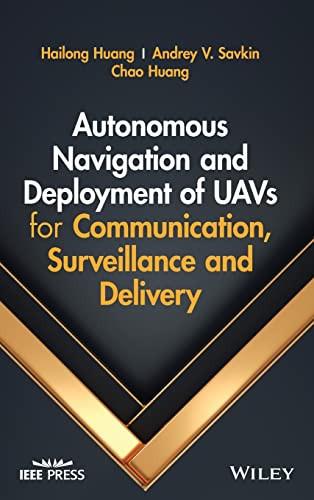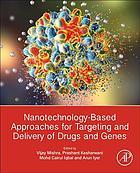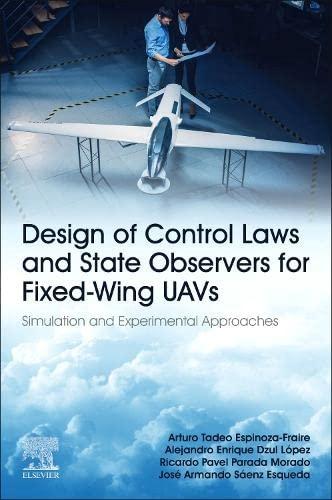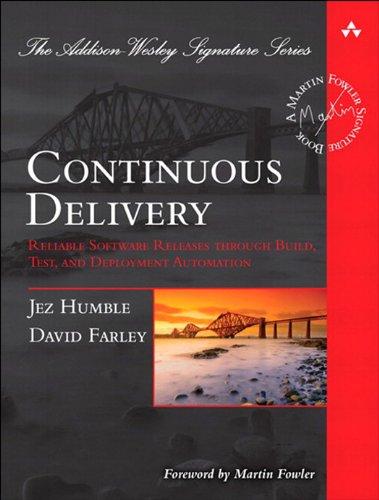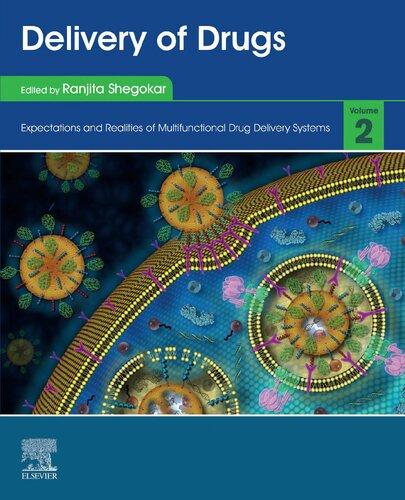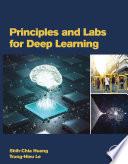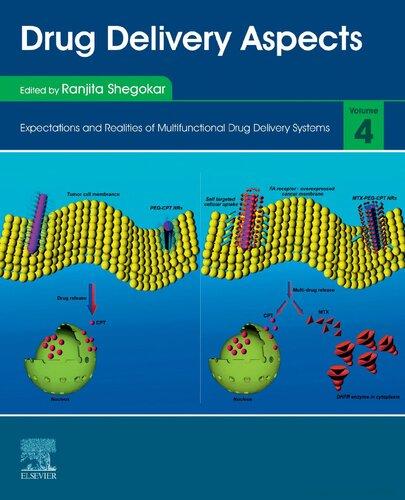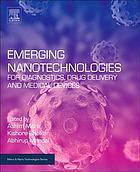AutonomousNavigationandDeploymentof UAVsforCommunication,Surveillanceand Delivery
HailongHuang,PhD
DepartmentofAeronauticalandAviationEngineering
TheHongKongPolytechnicUniversity,HongKong,China
AndreyV.Savkin,PhD
SchoolofElectricalEngineeringandTelecommunications UniversityofNewSouthWales,Sydney,NSW,Australia
ChaoHuang,PhD
DepartmentofIndustrialandSystemsEngineering
TheHongKongPolytechnicUniversity,HongKong,China
Copyright©2023byTheInstituteofElectricalandElectronicsEngineers,Inc. Allrightsreserved.
PublishedbyJohnWiley&Sons,Inc.,Hoboken,NewJersey. PublishedsimultaneouslyinCanada.
Nopartofthispublicationmaybereproduced,storedinaretrievalsystem,ortransmittedinany formorbyanymeans,electronic,mechanical,photocopying,recording,scanning,orotherwise, exceptaspermittedunderSection107or108ofthe1976UnitedStatesCopyrightAct,without eitherthepriorwrittenpermissionofthePublisher,orauthorizationthroughpaymentofthe appropriateper-copyfeetotheCopyrightClearanceCenter,Inc.,222RosewoodDrive,Danvers, MA01923,(978)750-8400,fax(978)750-4470,oronthewebatwww.copyright.com.Requeststo thePublisherforpermissionshouldbeaddressedtothePermissionsDepartment,JohnWiley& Sons,Inc.,111RiverStreet,Hoboken,NJ07030,(201)748-6011,fax(201)748-6008,oronlineat http://www.wiley.com/go/permission.
LimitofLiability/DisclaimerofWarranty:Whilethepublisherandauthorhaveusedtheirbest effortsinpreparingthisbook,theymakenorepresentationsorwarrantieswithrespecttothe accuracyorcompletenessofthecontentsofthisbookandspecificallydisclaimanyimplied warrantiesofmerchantabilityorfitnessforaparticularpurpose.Nowarrantymaybecreatedor extendedbysalesrepresentativesorwrittensalesmaterials.Theadviceandstrategiescontained hereinmaynotbesuitableforyoursituation.Youshouldconsultwithaprofessionalwhere appropriate.Neitherthepublishernorauthorshallbeliableforanylossofprofitoranyother commercialdamages,includingbutnotlimitedtospecial,incidental,consequential,orother damages.
Forgeneralinformationonourotherproductsandservicesorfortechnicalsupport,please contactourCustomerCareDepartmentwithintheUnitedStatesat(800)762-2974,outsidethe UnitedStatesat(317)572-3993orfax(317)572-4002.
Wileyalsopublishesitsbooksinavarietyofelectronicformats.Somecontentthatappearsin printmaynotbeavailableinelectronicformats.FormoreinformationaboutWileyproducts, visitourwebsiteatwww.wiley.com.
LibraryofCongressCataloging-in-PublicationDataAppliedfor: HardbackISBN:9781119870838
CoverDesign:Wiley
CoverImage:©yuanyuanyan/GettyImages
Setin9.5/12.5ptSTIXTwoTextbyStraive,Chennai,India
Contents
AuthorBiographies ix
Preface xi
1Introduction 1
1.1ApplicationsofUAVs 1
1.2ProblemsofAutonomousNavigationandDeploymentofUAVs 2
1.3OverviewandOrganizationoftheBook 4
1.4SomeOtherRemarks 5 References 6
2DeploymentofUAVBaseStationsforWireless CommunicationCoverage 11
2.1Introduction 11
2.2RelatedWork 14
2.3UAV-BSDeploymentforMaximizingCoverage 17
2.3.1ProblemStatement 17
2.3.2ProposedSolution 19
2.3.3Evaluation 21
2.4UAV-BSDeploymentforMaximizingCoverageandMinimizing Interference 24
2.4.1SystemModelandProblemStatement 24
2.4.2ProposedSolution 27
2.4.3SimulationResults 31
2.4.3.1DatasetandSimulationSet-Up 31
2.4.3.2ComparingApproaches 32
2.4.3.3SimulationResults 32
2.5VoronoiPartitioning-BasedUAV-BSDeployment 36
2.5.1ProblemStatementandMainResults 36
2.5.2SimulationResults 41
2.6Range-BasedUAV-BSDeployment 43
2.6.1ProblemStatementandMainResults 43
2.6.2SimulationResults 49
2.7Summary 52 References 52
3DeploymentofUAVsforSurveillanceofGroundAreasand Targets 57
3.1Introduction 57
3.2RelatedWork 60
3.3AsymptoticallyOptimalUAVDeploymentforSurveillanceofaFlat GroundArea 61
3.3.1ProblemStatement 61
3.3.2DeploymentAlgorithm 63
3.3.3Evaluation 67
3.4UAVDeploymentforSurveillanceofUnevenGroundAreas 71
3.4.1ProblemStatement 71
3.4.2DeploymentAlgorithm 73
3.4.3Evaluation 78
3.52DUAVDeploymentforGroundTargetSurveillance 80
3.5.1ProblemStatement 80
3.5.2ProposedSolution 82
3.5.3Evaluation 85
3.63DUAVDeploymentforGroundTargetSurveillance 87
3.6.1ProblemStatement 87
3.6.2ProposedSolution 89
3.6.3Evaluation 95
3.7SummaryandFutureResearch 99 References 100
4AutonomousNavigationofUAVsforSurveillanceofGround AreasandTargets 105
4.1Introduction 105
4.2RelatedWork 108
4.3AsymptoticallyOptimalPathPlanningforSurveillanceofGround Areas 110
4.3.1ProblemStatement 110
4.3.2PathPlanningAlgorithm 111
4.3.3SimulationResults 114
4.4NavigationofUAVsforSurveillanceofaMovingGroundArea 117
4.4.1ProblemStatement 117
4.4.2NavigationLaw 119
4.4.2.1AvailableMeasurements 120
4.4.3SimulationResults 122
4.5NavigationofUAVsforSurveillanceofMovingTargetsonaRoad Segment 125
4.5.1ProblemStatement 125
4.5.2ProposalSolution 126
4.5.2.1MonitoringMode 126
4.5.2.2InitialMode 127
4.5.2.3SearchingMode 128
4.5.2.4AccumulatingMode 129
4.5.3SimulationResults 130
4.6NavigationofUAVsforSurveillanceofMovingTargets alongaRoad 134
4.6.1ProblemStatement 134
4.6.2NavigationAlgorithm 137
4.6.3SimulationResults 139
4.7NavigationofUAVsforSurveillanceofGroupsofMovingGround Targets 142
4.7.1ProblemStatementandProposedApproach 143
4.7.2NavigationMethod 146
4.7.3SimulationResults 150
4.8SummaryandFutureResearch 153 References 154
5AutonomousUAVNavigationforCovertVideo
Surveillance 159
5.1Introduction 159
5.2RelatedWork 160
5.3Optimization-BasedNavigation 162
5.3.1SystemModel 162
5.3.2ProblemStatement 165
5.3.3PredictiveDPBasedTrajectoryPlanningAlgorithm 166
5.3.3.1AeronauticTrajectoryRefinement 169
5.3.4Evaluation 174
5.4BiologicallyInspiredMotionCamouflage-basedNavigation 181
5.4.1ProblemStatement 182
5.4.1.1AvailableMeasurements 182
5.4.2MotionCamouflageGuidanceLaw 183
5.4.3Evaluation 185
5.5SummaryandFutureWork 188 References 189
6IntegrationofUAVsandPublicTransportationVehiclesfor ParcelDelivery 195
6.1Introduction 195
6.2RelatedWork 199
6.3SystemModel 203
6.4One-wayPathPlanning 204
6.4.1ProblemStatement 204
6.4.2ProposedSolution 207
6.4.2.1PathTraversalTime 207
6.4.2.2ReliablePathConstruction 210
6.4.2.3Energy-awareReliablePath 213
6.4.3Evaluation 215
6.5Round-tripPathPlanninginaDeterministicNetwork 218
6.5.1DeterministicModel 218
6.5.1.1ExtendedMultimodalNetwork 220
6.5.2ProblemStatement 222
6.5.2.1ShortestUAVPathProblem 222
6.5.3ProposedSolution 223
6.5.3.1TheDijkstra-basedAlgorithm 223
6.5.3.2ReliableUAVPath 225
6.5.3.3ExtendedCoverage 228
6.5.4Evaluation 228
6.6Round-tripPathPlanninginaStochasticNetwork 232
6.6.1ProblemStatement 233
6.6.2ProposedSolution 235
6.6.2.1ProposedAlgorithm 235
6.6.2.2RobustRound-tripPlanningAlgorithm 240
6.6.3Evaluation 243
6.7SummaryandFutureWork 246 References 246
Abbreviations 252 Index 253
AuthorBiographies
HailongHuang receivedtheBScdegreeinautomation,fromChinaUniversityofPetroleum,Beijing, China,in2012,andreceivedthePhDdegreeinSystems andControlfromtheUniversityofNewSouthWales, Sydney,Australia,in2018.HeisanAssistantProfessor attheDepartmentofAeronauticalandAviationEngineeringatTheHongKongPolytechnicUniversity, HongKong.Hiscurrentresearchinterestsinclude guidance,navigation,andcontrolofmobilerobots, multi-agentsystems,anddistributedcontrol.
AndreyV.Savkin receivedtheMSandPhDdegrees inmathematicsfromtheLeningradStateUniversity, SaintPetersburg,Russia,in1987and1991,respectively.From1987to1992,hewaswiththeTelevision ResearchInstitute,Leningrad,Russia.From1992to 1994,heheldaPostdoctoralpositionintheDepartmentofElectricalEngineering,AustralianDefence ForceAcademy,Canberra.From1994to1996,hewas aResearchFellowintheDepartmentofElectrical andElectronicEngineeringandtheCooperative ResearchCentreforSensorSignalandInformation Processing,UniversityofMelbourne,Australia.From1996to2000,hewasa SeniorLecturer,andthenanAssociateProfessorintheDepartmentofElectrical andElectronicEngineering,UniversityofWesternAustralia,Perth.Since2000, hehasbeenaProfessorintheSchoolofElectricalEngineeringandTelecommunications,UniversityofNewSouthWales,Sydney,NSW,Australia.Hiscurrent researchinterestsincluderobustcontrolandstateestimation,hybriddynamical systems,guidance,navigationandcontrolofmobilerobots,applicationsof
x AuthorBiographies
controlandsignalprocessinginbiomedicalengineeringandmedicine.Hehas authored/coauthoredsevenresearchmonographsandnumerousjournaland conferencepapersonthesetopics.HehasservedasanAssociateEditorforseveral internationaljournals.
ChaoHuang receivedtheBScdegreeinautomation, fromChinaUniversityofPetroleum,Beijing,China, inJune2012,andreceivedthePhDdegreefromthe UniversityofWollongong,Wollongong,Australia,in December2018.Sheisaresearchassistantprofessor attheDepartmentofIndustrialandSystemsEngineering,theHongKongPolytechnicUniversity,Hong Kong.Herinterestsincludemotionplanning,human machinecollaboration,faulttolerant,automotive controlandapplication.
Preface
Unmannedaerialvehicles(UAVs),alsoknownasaerialdrones,havestartedto reshapeourmodernlife,thankstotheinherentattributessuchasmobilityand flexibility.OncenationallegislationsallowUAVstoflyautonomously,swarmsof UAVswillpopulateourcityskiestoconductvariousmissions:rescueoperations, surveillance,andmonitoring,andalsosomeemergingapplicationssuchasgoods deliveryandtelecommunications.
Thisbookisprimarilyaresearchmonographthatpresents,inadetailedand unifiedmanner,therecentadvancementsrelevanttotheapplicationsofUAVs inwirelesscommunications,surveillanceandmonitoringofgroundtargets andareas,andgoodsdelivery.Themainintendedaudienceforthismonograph includespostgraduateandgraduatestudents,aswellasprofessionalresearchers andindustrypractitionersworkinginavarietyofareassuchasrobotics,aerospace engineering,wirelesscommunications,signalprocessing,systemtheory,computerscienceandappliedmathematicswhohaveaninterestinthegrowingfield ofautonomousnavigationanddeploymentofUAVs.Thisbookisessentially self-contained.Thereaderisassumedtobefamiliarwithbasicundergraduate levelmathematicaltechniques.Theresultspresentedarediscussedtoagreat extentandillustratedbyexamples.Wehopethatreadersfindthismonograph interestingandusefulandgainadeeperinsightintothechallengingissuesin thefieldofautonomousnavigationanddeploymentofUAVsforcommunication, surveillance,anddelivery.Moreover,inthebook,wehavemadecommentson someopenissues,andweencouragereaderstoexplorethemfurther.Thematerial inthisbookderivesfromaperiodofresearchcollaborationbetweentheauthors from2018to2022.Someofitspartshaveseparatelyappearedinjournalandconferencepapers.Themanuscriptintegratesthemintoaunifiedwhole,highlights connectionsbetweenthem,supplementsthemwithneworiginalfindingsofthe authors,andpresentstheentirematerialinasystematicandcoherentfashion. Inpreparationofthisresearchmonograph,theauthorswishtoacknowledge thefinancialsupporttheyhavereceivedfromtheAustralianResearchCouncil.
xii Preface
ThisresearchworkhasalsoreceivedfundingfromtheAustralianGovernment, viagrantAUSMURIB000001associatedwithONRMURIgrantN00014-19-1-2571. Also,theauthorsaregratefulforthesupporttheyhavereceivedthroughoutthe productionofthisbookfromtheSchoolofElectricalEngineeringandTelecommunicationsattheUniversityofNewSouthWales,Sydney,Australia,theDepartment ofAeronauticalandAviationEngineeringandtheDepartmentofIndustrialand SystemsEngineering,TheHongKongPolytechnicUniversity,HongKong,China.
Furthermore,AndreySavkinisgratefulfortheloveandsupporthehasreceived fromhisfamily.HailongHuangandChaoHuangarealsogratefulforthesupport fromtheirparents.
1.1ApplicationsofUAVs
Thankstotheinherentattributessuchasmobilityandflexibility,unmannedaerial vehicles(UAVs),alsoknownasaerialdrones,havestartedtoreshapeourmodernlife.OncenationallegislationsmakelawstoallowUAVstoflyautonomously, swarmsofUAVwillpopulatetheskyofourcitiestoconductvariousmissions: rescueoperations,surveillance,andmonitoring,andalsosomeemergingapplicationssuchasgoodsdeliveryandtelecommunications.Sometypicalapplications ofUAVsaresummarizedinFigure1.1.
UAVscanservicehumans.AtypicalexampleisthatUAVsplaytheroleof aerialbasestationstoprovidecommunicationservicetocellularusers,especiallyinsomecongestedurbanareas[1].Thisisapromisingsolutionto5G andbeyond-5Gnetworks.Itisalsoveryusefulindisasterareaswherethe communicationinfrastructuresaredown.Also,UAVshavebeenusedtotrack targets,suchashumans,animals,andvehicles[2],andinagriculture[3],traffic monitoring[4],architectureinspection[5],environmentmonitoring[6],disaster management[7].Furthermore,UAVscanprovideservicetowirelesssensor networks(WSNs)[8].Workingastheaerialsinks,theUAVscancollectsensory datafromdistributedsensornodes.Theycannavigategroundrobotssincethey mayhaveabetterviewoftheenvironment,andtheycanalsocollaboratewith groundrobotstoexecutecomplextasks.BeyondthosepresentedinFigure1.1, packagedeliveryisanotherserviceUAVscanprovide,whichalsoattractsgreat interestfromboththeresearchcommunity[9]andlogisticscompanies[10–14].
Inadditiontothesole-UAVusage,thecollaborationbetweenUAVsandground vehiclesforsurveillanceandparceldeliveryhasgainedattention.Akeypointis usingoneormoreUAVstovisitagivensetofpositions.Consideringthelimited capacityoftheon-boardbattery,theflyingtimeofaUAVisconstrained.AstraightforwardideaistoinstallgroundchargingstationsatwhichaUAVcanrechargeor replaceitsbattery[15].Wheretodeploythegroundchargingstationsinfluences
AutonomousNavigationandDeploymentofUAVsforCommunication,SurveillanceandDelivery, FirstEdition.HailongHuang,AndreyV.Savkin,andChaoHuang. ©2023TheInstituteofElectricalandElectronicsEngineers,Inc.Published2023byJohnWiley&Sons,Inc.
Figure1.1 TheusageofUAVs.
thecoverageperformancethatUAVscanachieve.Givenasetofgroundcharging stations,thereview[16]focusesonthepathplanningproblemofaUAVtovisit agivensetofpositionssuccessfully.Anotherideaistousegroundrobotstofunctionasmobilechargingplatforms[17–19].Specifically,thechapter[17]considers theusageofabattery-constrainedUAVandabattery-unlimitedgroundrobotfor large-scalemapping.TheUAVcanrechargeitsbatteryonthegroundrobot.While thegroundrobotcanonlymoveontheroadnetwork,theUAVcantraversethe areasofftheroadnetwork.Theauthorsprovideastrategyforthecooperationof theUAVandgroundrobotsuchthattheycanfinishthemappingmissionunder theenergyconstraintoftheUAV.Thechapter[18]considersasimilarscenario as[17].Theauthorsprovideanintegerprogramforthisproblem.Differentfrom [17,18],in[19],theUAVcantravelwithagroundrobottogetherandrechargeits batteryduringthemovement.Clearly,thisstrategyreducesthetimetofinishthe mission.
1.2ProblemsofAutonomousNavigationand DeploymentofUAVs
InordertofullyreapthebenefitsofUAVsintheaforementionedreal-lifeapplications,somecoretechnicalchallenges,includingthe3Dplacementofmultiple UAVs,thetrajectory/movementdesign,theenergyefficiencyoptimization.These deploymentandautonomousnavigationofUAVsplayanextremelyimportant rolefortheusageofUAVs.Atypicalscenarioisthatateamofcollaborating UAVsisconductingamissionforwhichitisneededtodeterminesomeoptimal operationstatusincludingphysicalpositionsandotherapplication-dependent attributessuchastransmissionpowerswhenUAVsserveasaerialbasestations.
Forastaticsituation,wecanformulatesomeUAVnavigationanddeploymentproblemsasoptimizationproblems.Theobjectivefunctioncanbe application-dependent.Forexample,whenUAVsareusedtoservecellularusers, atypicalproblemishowtodeployUAVstocatertowirelessusers’instantaneous trafficdemands.Existingresearchhasinvestigatedthetrajectoryplanning problemforasingleUAVtorelayinformation[20]andbroadcast/multicast datapackets[21].Besidesthetrajectoryplanningproblem,researchershave alsoinvestigatedtheUAVdeploymentsothatwirelesscoverageisprovidedto thestaticusersinatargetregion,bydesigningtheoptimaloperatinglocation in3Dspace[22],minimizingthenumberofthestoppointsfortheUAV[23], andminimizingthetotaldeploymenttime[24].WhenUAVsareusedtomonitorgroundtargets,somemetricdescribingthequalityofsurveillancewillbe regardedastheobjective.Moreover,thedeploymentproblemoftencomeswith someconstraints.Animportantconstraintistheconnectivity[25].WhenmultipleUAVsoperatetogether,theyneedtoformaconnectednetworkwithsome groundbasestationforcommunication.Thecommonapproachistointroducea connectivitygraph,whichcanrestricttherelativepositionsoftheUAVssothat avalidcommunicationchannelbetweenapairofUAVsisguaranteed.Another constraintisaboutcollisionavoidance.Foraparticulararea,theremaybeexisting someinfrastructuressuchasbuildings,whichmayberegardedasno-flyzones [26].Suchno-flyzonesfurtherplacesomeconstraintstotheUAVdeployment problem.Then,thedeploymentproblembecomesaconstrainedoptimization problem,andthesolutiontothisproblemisthepositionsoftheUAVs.
Foradynamicsituation,theoptimalpositionsofUAVswillbetime-varying.In thiscase,deploymentandnavigationofUAVsarecoupled.Theoptimalpositions ofUAVsarecomputedbyaddressingthedeploymentproblem,andthentheUAVs arenavigatedfromtheircurrentpositionstonewpositions.Duringthenavigationprocess,itshouldbeguaranteedthattheconnectivityismaintained,UAVsdo notcollidewithanyobstaclesanddonotenteranyno-flyzones.Modelpredictive control(MPC)[27]hasbeenrecognizedasanimportanttooltoaddressthistype ofconstrainedoptimizationproblems.Areviewofrecentresultsondeployment andnavigationofteamsofcollaboratingUAVsforsurveillancecanbefoundinthe surveypaper[28].Moreover,areviewofchallengesandachievementsinreaching fullautonomyofUAVsispresentedin[29].Theresearchmonograph[30]studies variousapplicationsofUAVsforsupportofwirelesscommunicationnetworks. Thoughtheresearchcommunityhasalreadymadeagreatcontributiontothe navigationanddeploymentofUAVs,manyoftheexistingapproachessufferfrom thecomplexityforreal-timeimplementation.Additionally,themobilityofground targets(inwirelesscoverageandalsosurveillanceapplications)isgenerally overlookedbymanyresearcharticles,basedonwhich,themobilityofUAVs needstobecarefullyconsideredtogetabetterqualityofservice(QoS).Motivated
bysuchresearchgaps,andtofacilitatetheapplicationofUAVs,navigationand deploymentmethodsshouldbeimplementedinreal-timeateachUAVusing localinformationonly.Thisrequiresproposedmethodsbecomputationally efficient.Moreover,theoptimalityoftheoverallperformanceoftheUAVsshould beguaranteed.Therefore,decentralizedalgorithmsareoftenneededforUAV deploymentandnavigation.
1.3OverviewandOrganizationoftheBook
Inthissection,webrieflydescribetheresultspresentedinthisresearch monograph.
Thisbookisproblem-oriented,nottechnique-oriented.Soeachchapteris self-containedanddevotestoadetaileddiscussionofaninterestingproblem thatarisesintherapidlydevelopingareaofUAVs’applications.Wepresent relevantapproachesfromacontrolsystemviewpoint.Thus,inChapters2–6, wefirstpresentsystemmodelsandthenformulateproblemsofinterest,which arefollowedbyproposedapproachestoaddresstheproblems.Finally,we presentcomputersimulationresultstoillustratetheeffectivenessoftheproposed approaches.Theorganizationofthebookisasfollows.
InChapter2,wediscussanapplicationofUAVsinprovidingcellularserviceas aerialbasestations.WestudyaproblemofproactiveUAVdeployment.ThedeploymentofUAVsplaysakeyroleforthequalityofserviceinsuchapplications.Two typicalscenariosarestudied.Thefirstscenarioisinurbanareas,andtheUAVsare deployedoverstreetstoavoidcollisionwithbuildings.Thesecondscenarioisfor disasterareas.WeformulateseveraloptimizationproblemstooptimizethequalityofserviceprovidedbytheUAVs,andcomputationallyefficientalgorithmsare presentedtoaddresstheseproblems.
Chapter3discussessomerecentdevelopmentsinusingUAVstomonitorground areasandtargets.Specifically,wepresentapproachestofindingtheminimum numberofUAVsequippedwithground-facingvideocamerasandtheirdeploymentpositionstofullymonitoranareaofinterest,whichcanbeeitheraflatarea oranunevenareawithbuildings,hills,ormountains.Wealsopresentalgorithms thatcanfindtheoptimalpositionsofUAVstosurveyagroupofgroundtargets withinacertainarea.Wedevelopdeploymentalgorithmsforboththe2Dand3D deploymentofUAVs.Theoreticalanalysisontheperformanceoftheseapproaches isalsoprovided.
InChapter4,wediscussapplicationsofUAVsforsurveillanceandmonitoring ofgroundareasandtargets,whichcorrespondstovariouspracticalapplications includingbutnotlimitedtosurveillanceofdisasterprocessessuchasoffshoreoil spills,floodandcoalashspills,andmonitoringgroundvehiclesandpedestrians.
WepresentseveraldecentralizedalgorithmsfornavigationofateamofUAVsto collaborativelyconductsurveillancemissions.Thepropertiesofthesealgorithms suchasoptimalityarediscussed.
Chapter5focusesoncovertvideosurveillanceusingUAVs,whichisarelativelynewresearcharea.Differentfromusualsurveillanceapplicationsdiscussed inChapters3and4,covertsurveillancerequiresthattheintentionoftheUAVs isnotdiscoveredbythetargetsofinterest.Wepresenttwoapproachestothis problem.Thefirstapproachisoptimization-based.Wepresentanewmetricto characterizethedisguisingperformance,whichevaluatesthechangeoftherelativedistanceandanglebetweentheUAVandthetarget.Then,weformulatean optimizationproblem,whichjointlymaximizesthedisguisingperformanceand minimizestheenergyefficiencyoftheUAV,subjecttothemotionconstraintof theUAVandtherequirementofkeepingthetargetwithinview.Wepresenta dynamicprogrammingmethodtoplantheUAV’strajectoryinanonlinemanner. Thesecondapproachisabiologicallyinspiredmotioncamouflage-basedmethod. Toachievemotioncamouflage,theUAValwaysmovesonthestraightlinesegment connectingthetargetandafixedreferencepoint.Aslidingmodecontrolstrategy isdeveloped,whichonlytakesthebearinginformationasinput.Wepresentextensivecomputersimulationstodemonstratetheperformanceoftheseapproaches.
InChapter6,wediscusstheapplicationsofUAVsinthelast-mileparceldelivery.UAVshavebeenconsideredasapromisingtoolforfuturelogisticsindustry bymanycompaniesthankstoreducedcostandincreasedmobility.However,one barrieristhelimitedflighttimeduetothelimitationofonboardbatteries.This chapterpresentsrecentresearchresultsonusingpublictransportationvehicles toassistUAVdelivery.Aparticularattentionispaidtopathplanningproblems whenUAVscantravelwithpublictransportationvehicles,andseveralalgorithms arepresentedtodealwiththeseproblemindifferentsituations.
1.4SomeOtherRemarks
Chapter2ofthisbookstudiesusingUAVsforwirelesscommunicationcoverage, Chapters3–5areaboutusingUAVsforvideosurveillanceofgroundareasandtargets,andChapter6concentratesonUAVassisteddelivery.Ontheotherhand, Chapters3and3ofthisbookstudiesUAVdeployment,Chapters4and5address UAVnavigation,andChapter6concentratesonUAVflightscheduling.Furthermore,Chapters1–4studiesteamsofUAVs,Chapter5concentratesonusinga singleUAV,whereasChapter6studiesUAVscollaboratingwithgroundpublic transportationvehicles.Also,itshouldbepointedoutthatChapters2–5study deterministicmodelsthatoftencontainlargeuncertainties,whereasChapter6 addressesbothdeterministicandstochasticmodels.
ItshouldbepointedoutthatteamsofcollaboratingautonomousUAVsguided bydecentralizednavigationalgorithmsdevelopedinthisbookcanbenaturally viewedasnetworkedcontrolsystems;seee.g.[31]andreferencestherein. Themainresultsofthisresearchmonographwereoriginallypublishedinthe journalpapers[32–49].
TheliteratureinthefieldofautonomousUAVnavigationanddeploymentfor communication,groundsurveillance,andparceldeliveryisvast,andwehave limitedourselvestoreferencesthatwefoundmostusefulorthatcontainmaterial supplementingthistext.Thecoverageoftheliteratureinthisbookisbynomeans complete.Weapologizeinadvancetomanyauthorswhosevaluableresearch contributionshavenotbeenmentioned.
Inconclusion,theareaofautonomousnavigationanddeploymentofUAVsis afascinatingdisciplinebridgingrobotics,aerospaceengineering,systemtheory, controlengineering,communications,informationtheory,computerscience,and appliedmathematics.ThestudyofdecentralizedUAVnavigationanddeployment problemsrepresentsadifficultandexcitingchallengeinsystemengineering. Wehopethatthisresearchmonographwillhelpinsomesmallwaytomeetthis challenge.
References
1 H.HuangandA.V.Savkin,“Towardstheinternetofflyingrobots:asurvey,” Sensors,vol.18,no.11,p.4038,2018.
2 L.D.P.Pugliese,F.Guerriero,D.Zorbas,andT.Razafindralambo,“Modelling themobiletargetcoveringproblemusingflyingdrones,” OptimizationLetters, vol.10,no.5,pp.1021–1052,2016.
3 C.ZhangandJ.M.Kovacs,“Theapplicationofsmallunmannedaerial systemsforprecisionagriculture:areview,” PrecisionAgriculture,vol.13, no.6,pp.693–712,2012.
4 K.Kanistras,G.Martins,M.J.Rutherford,andK.P.Valavanis,“Asurvey ofunmannedaerialvehicles(UAVs)fortrafficmonitoring,”in HandbookofUnmannedAerialVehicles,(eds.K.P.Valavanis,G.J.Vachtsevanos), pp.2643–2666,Springer,2014.
5 Z.Zhou,C.Zhang,C.Xu,F.Xiong,Y.Zhang,andT.Umer,“Energy-efficient industrialinternetofUAVsforpowerlineinspectioninsmartgrid,” IEEE TransactionsonIndustrialInformatics,vol.14,no.6,pp.2705–2714,2018.
6 B.Esakki,S.Ganesan,S.Mathiyazhagan,K.Ramasubramanian,B. Gnanasekaran,B.Son,S.W.Park,andJ.S.Choi,“Designofamphibious vehicleforunmannedmissioninwaterqualitymonitoringusinginternetof things,” Sensors,vol.18,no.10,p.3318,2018.
7 S.M.AdamsandC.J.Friedland,“Asurveyofunmannedaerialvehicle(UAV) usageforimagerycollectionindisasterresearchandmanagement,”in The9th InternationalWorkshoponRemoteSensingforDisasterResponse,p.8,2011.
8 C.CaillouetandT.Razafindralambo,“Efficientdeploymentofconnected unmannedaerialvehiclesforoptimaltargetcoverage,”in GlobalInformation InfrastructureandNetworkingSymposium(GIIS),pp.1–8,IEEE,2017.
9 V.Gatteschi,F.Lamberti,G.Paravati,A.Sanna,C.Demartini,A.Lisanti,and G.Venezia,“Newfrontiersofdeliveryservicesusingdrones:aprototypesystemexploitingaquadcopterforautonomousdrugshipments,”in The39th AnnualComputerSoftwareandApplicationsConference(COMPSAC),vol.2, pp.920–927,IEEE,2015.
10 Amazon.comInc.,“Amazonprimeair,”Accessedon1Nov.2021.Online: http://www.amazon.com/primeair.
11 “Chinaisonthefasttracktodronedeliveries,”Accessedon1Nov.2021. Online:https://www.bloomberg.com/news/features/2018-07-03/china-s-on-thefast-track-to-making-uav-drone-deliveries.
12 “SFexpressapprovedtoflydronestodelivergoods,”Accessedon1Nov.2021. Online:https://www.caixinglobal.com/2018-03-28/sf-express-approved-to-flydrones-to-deliver-goods-101227325.html.
13 “DHL’sparcelcopter:changingshippingforever,”Accessedon1Nov.2021. Online:https://discover.dhl.com/business/business-ethics/parcelcopter-dronetechnology.
14 “UPStestingdronesforuseinitspackagedeliverysystem,”Accessedon1Nov. 2021.Online:https://www.apnews.com/f34dc40191534203aa5d041c3010f6c5.
15 I.Hong,M.Kuby,andA.T.Murray,“Arange-restrictedrechargingstation coveragemodelfordronedeliveryserviceplanning,” TransportationResearch PartC:EmergingTechnologies,vol.90,pp.198–212,2018.
16 K.SundarandS.Rathinam,“Algorithmsforroutinganunmannedaerial vehicleinthepresenceofrefuelingdepots,” IEEETransactionsonAutomation ScienceandEngineering,vol.11,no.1,pp.287–294,2014.
17 P.MainiandP.Sujit,“OncooperationbetweenafuelconstrainedUAVanda refuelingUGVforlargescalemappingapplications,”in InternationalConferenceonUnmannedAircraftSystems(ICUAS),pp.1370–1377,IEEE,2015.
18 Z.Luo,Z.Liu,andJ.Shi,“Atwo-echeloncooperatedroutingproblemfora groundvehicleanditscarriedunmannedaerialvehicle,” Sensors,vol.17,no. 5,p.1144,2017.
19 K.Yu,A.K.Budhiraja,andP.Tokekar,“Algorithmsforroutingofunmanned aerialvehicleswithmobilerechargingstationsandforpackagedelivery,” arXiv preprint,arXiv:1704.00079,2017.
20 S.Zhang,H.Zhang,Q.He,K.Bian,andL.Song,“Jointtrajectoryandpower optimizationforUAVrelaynetworks,” IEEECommunicationsLetters,vol.22, no.1,pp.161–164,2018.
21 Y.Zeng,X.Xu,andR.Zhang,“Trajectorydesignforcompletiontime minimizationinUAV-enabledmulticasting,” IEEETransactionsonWireless Communications,vol.17,no.4,pp.2233–2246,2018.
22 A.Al-Hourani,S.Kandeepan,andS.Lardner,“OptimalLAPaltitudefor maximumcoverage,” IEEEWirelessCommunicationsLetters,vol.3,no.6, pp.569–572,2014.
23 M.Mozaffari,W.Saad,M.Bennis,andM.Debbah,“Unmannedaerialvehicle withunderlaiddevice-to-devicecommunications:performanceandtradeoffs,” IEEETransactionsonWirelessCommunications,vol.15,no.6,pp.3949–3963, 2016.
24 X.ZhangandL.Duan,“FastdeploymentofUAVnetworksforoptimal wirelesscoverage,” IEEETransactionsonMobileComputing,vol.18,no.3, pp.588–601,2018.
25 Z.Han,A.L.Swindlehurst,andK.R.Liu,“OptimizationofMANETconnectivityviasmartdeployment/movementofunmannedairvehicles,” IEEE TransactionsonVehicularTechnology,vol.58,no.7,pp.3533–3546,2009.
26 H.HuangandA.V.Savkin,“Energy-efficientautonomousnavigationof solar-poweredUAVsforsurveillanceofmobilegroundtargetsinurbanenvironments,” Energies,vol.13,no.21,p.5563,2020.
27 E.F.CamachoandC.B.Alba, Modelpredictivecontrol.Springer,2013.
28 X.LiandA.V.Savkin,“Networkedunmannedaerialvehiclesforsurveillance andmonitoring:asurvey,” FutureInternet,vol.13,no.7,p.174,2021.
29 T.ElmokademandA.V.Savkin,“TowardsfullyautonomousUAVs:asurvey,” Sensors,vol.21,no.18,p.6223,2021.
30 H.Huang,A.V.Savkin,andC.Huang, wirelesscommunicationnetworks supportedbyautonomousUAVsandmobilegroundrobots.Elsevier,2022.
31 A.S.MatveevandA.V.Savkin, Estimationandcontrolovercommunication networks.Boston,MA:Birkhauser,2009.
32 H.HuangandA.V.Savkin,“Analgorithmofefficientproactiveplacement ofautonomousdronesformaximumcoverageincellularnetworks,” IEEE WirelessCommunicationsLetters,vol.7,no.6,pp.994–997,2018.
33 H.HuangandA.V.Savkin,“Amethodforoptimizeddeploymentof unmannedaerialvehiclesformaximumcoverageandminimuminterferenceincellularnetworks,” IEEETransactionsonIndustrialInformatics,vol. 15,no.5,pp.2638–2647,2019.
34 A.V.SavkinandH.Huang,“Deploymentofunmannedaerialvehiclebasestationsforoptimalqualityofcoverage,” IEEEWirelessCommunicationsLetters, vol.8,no.1,pp.321–324,2019.
35 A.V.SavkinandH.Huang,“Range-basedreactivedeploymentofautonomous dronesforoptimalcoverageindisasterareas,” IEEETransactionsonSystems, Man,andCybernetics:Systems,vol.51,no.7,pp.4606–4610,2021.
36 A.V.SavkinandH.Huang,“Asymptoticallyoptimaldeploymentofdronesfor surveillanceandmonitoring,” Sensors,vol.19,no.9,p.2068,2019.
37 A.V.SavkinandH.Huang,“Proactivedeploymentofaerialdronesforcoverageoververyuneventerrains:aversionofthe3Dartgalleryproblem,” Sensors,vol.19,no.6,p.1438,2019.
38 A.V.SavkinandH.Huang,“Amethodforoptimizeddeploymentofanetworkofsurveillanceaerialdrones,” IEEESystemsJournal,vol.13,no.4,pp. 4474–4477,2019.
39 H.HuangandA.V.Savkin,“Analgorithmofreactivecollisionfree3Ddeploymentofnetworkedunmannedaerialvehiclesforsurveillanceandmonitoring,” IEEETransactionsonIndustrialInformatics,vol.16,no.1,pp.132–140,2020.
40 H.Huang,A.V.Savkin,andC.Huang,“Decentralizedautonomousnavigation ofaUAVnetworkforroadtrafficmonitoring,” IEEETransactionsonAerospace andElectronicSystems,vol.57,no.4,pp.2558–2564,2021.
41 A.V.SavkinandH.Huang,“Navigationofanetworkofaerialdronesfor monitoringafrontierofamovingenvironmentaldisasterarea,” IEEESystems Journal,vol.14,no.4,pp.4746–4749,2020.
42 A.V.SavkinandH.Huang,“Asymptoticallyoptimalpathplanningforground surveillancebyateamofUAVs,” IEEESystemsJournal,pp.1–4,2021.https:// ieeexplore.ieee.org/abstract/document/9580756.
43 A.V.SavkinandH.Huang,“NavigationofaUAVnetworkforoptimalsurveillanceofagroupofgroundtargetsmovingalongaroad,” IEEETransactions onIntelligentTransportationSystems,pp.1–5,2021.https://ieeexplore.ieee.org/ document/9430769.
44 H.HuangandA.V.Savkin,“NavigatingUAVsforoptimalmonitoringof groupsofmovingpedestriansorvehicles,” IEEETransactionsonVehicular Technology,vol.70,no.4,pp.3891–3896,2021.
45 H.Huang,A.V.Savkin,andW.Ni,“OnlineUAVtrajectoryplanningforcovert videosurveillanceofmobiletargets,” IEEETransactionsonAutomationScience andEngineering,vol.19,no.2,pp.735–746,2022.
46 A.V.SavkinandH.Huang,“Bioinspiredbearingonlymotioncamouflage UAVguidanceforcovertvideosurveillanceofamovingtarget,” IEEESystems Journal,vol.15,no.4,pp.5379–5382,2021.
47 H.Huang,A.V.Savkin,andC.Huang,“Reliablepathplanningfordrone deliveryusingastochastictime-dependentpublictransportationnetwork,” IEEETransactionsonIntelligentTransportationSystems,vol.22,no.8, pp.4941–4950,2021.
48 H.Huang,A.V.Savkin,andC.Huang,“Roundtriproutingfor energy-efficientdronedeliverybasedonapublictransportationnetwork,” IEEETransactionsonTransportationElectrification,vol.6,no.3, pp.1368–1376,2020.
49 H.Huang,A.V.Savkin,andC.Huang,“Droneroutinginatime-dependent network:towardlow-costandlarge-rangeparceldelivery,” IEEETransactions onIndustrialInformatics,vol.17,no.2,pp.1526–1534,2021.
DeploymentofUAVBaseStationsforWireless CommunicationCoverage
2.1Introduction
Duetothetremendousincreaseofrecentwirelesstrafficdemand,InternetService Providers(ISPs)havebeendedicatedtodevelopingeffectivestrategiestoimprove userexperienceincellularnetworks[1].Densificationofstationarybasestations (BSs)isonesolution[2];however,ithasvariousdrawbackssuchasthehigh costofsiterentalandbackhaullinks.Moreimportantly,itmaynotbeefficiently utilizedinnonpeakperiods,whichisawasteofpreciousresource.Analternative solutionistodeployautonomousunmannedaerialvehicles(UAVs),whichwork asflyingBSs,toprovideInternetservicetouserequipments(UEs).Becauseofthe flexibility,theutilityofUAVsincellularnetworksattractslotsofresearchon thecommunicationmodelsincludingtheair-to-groundpathlossmodel[3]and theinterferencemodel[4],andtheplacementproblemincludingtheplacement ofasingleUAV[5,6]andseveralUAVs[7,8],etc.
AlthoughtheimplementationofUAVsincellularnetworksrequiresvarious techniquestocometogether,inthischapter,wefocusononekeyissue:the deploymentofUAVs.ThepositionsofUAVsnotonlyinfluencethecoverage oftheareaofinterestbutalsoimpacttheinterferenceatacertainUEfrom differentUAVs.Theinterferenceplaceschallengesonthesignaldemodulation atUEs,becausewhenthesignaltointerferenceandnoiseratioisbelowa threshold,UEscannotdemodulatetheintendedsignal.Therefore,thefundamentalquestionweanswerhereishowtodeploytheUAVssuchthattheycan servethelargestnumberofUEsandimposetheleastinterferenceonUEsina givenarea.
Differentfromtheassumptioninmanyexistingpapers,i.e.UEsarerandomly scatteredorfollowingapredefineddistribution(seee.g.[2]),weconsideramore practicalscenario.Inparticular,theUEstobeservedbyUAVsareoutdoor.This assumptioncanmaketheperformanceofourapproachclosertorealitybecause indoorUEsarenotthetargetsofUAVs.Torepresentcityenvironments,weadopta
AutonomousNavigationandDeploymentofUAVsforCommunication,SurveillanceandDelivery, FirstEdition.HailongHuang,AndreyV.Savkin,andChaoHuang.
©2023TheInstituteofElectricalandElectronicsEngineers,Inc.Published2023byJohnWiley&Sons,Inc.
2DeploymentofUAVBaseStationsforWirelessCommunicationCoverage
streetgraphmodel.Weconstructastreetgraphwithasetofpoints,andeachstreet intheareaisrepresentedbyasubsetofthesepoints.Furthermore,weassociate eachstreetpointwithaUEdensityfunction,whichreflectsthetrafficdemand atthispointduringacertainperiodoftime.SuchUEdensityfunctionplaysan importantroleindeterminingthepositionsofUAVs.Inpractice,theUEdensity functioncanbeconstructedviaeitherhistoryrecordingsoronlinecrowdsensing [9].Inthischapter,wechoosetheformermethod,i.e.webuilduptheUEdensity functionsbasedonarealdatasetcollectedfromasocialdiscoverymobileApp: Momo[10],whichcanbeagoodreflectionoftherealUEdistribution.
RegardingthefeasiblepositionsofUAVs,wehavethefollowingconcerns.First, toavoidhittingtallbuildings,theUAVsaredeployedoverthestreets.Second,the UAVsshouldbedeployedwithinacertainrangeoftheexistingelectricpowerpoles (wecallitchargingpoleintherestofthechaptertoindicateitsfunction),where theycanrechargethebattery.1 Thereasontoinvolvethisconditionisthatthe workingtimeofthebatteryonthestate-of-the-artcommercialUAVs,suchasDJI,2 isquitelimited.Thus,toguaranteeontheservicetime,theflyingtimebetweenthe chargingpoleandhoveringpositionshouldbecarefullycontrolled,otherwise,the UAVsmayrunoutofbattery.TherearesomestationaryBSsonthestreetgraphand theUAVstogetherwiththeseBSsthatformaconnectedcommunicationgraph. Inparticular,theBSsworkasaccesspointsandtheUAVsserveUEs.Arequest fromaUEwillbesenttoaBSbytheservingUAVeitherdirectlyorviaother relayUAVs.
WefirstassumethattheUAVsusedifferentfrequenciestotransmitdatatoUEs. WeformulateanoptimizationmodeltomaximizetheUEcoverageandminimize therelaycostbetweenUAVs.Weseektheoptimalpositionsonthestreetgraph fortheUAVstooptimizetheobjectivesubjecttothatoftheUAVsandtheBSsto formaconnectedgraph.Second,weformulateanoptimizationproblemseeking theoptimalpositionsoftheUAVsonthestreetgraphtomaximizeUEcoverage andminimizetheinterferenceeffect.Thisproblemisslightlysimilartotheblanketcoverageproblemof[11].However,intheproblemconsideredinthischapter, complete(perfect)blanketcoverageisnotrealistic.Furthermore,unlike[11],we takeintoaccountinterference.Weanalyzethepropertiesoflocalmaximaofour problem,basedonwhich,wethenproposeadistributedalgorithmtodetermine thelocallyoptimalpositionsforUAVs.Inthisdistributedalgorithm,eachUAV onlyrequiresthelocalinformationsuchastheUEdensitiesandthepositionsof thenearbyUAVs,whichmakesitsuperiortosomeexistingcentralizedalgorithms, e.g.[8,12–14].Weprovethattheproposedalgorithmconvergestothelocalmaximawithinafinitenumberofsteps.
1http://www.sbs.com.au/news/article/2017/08/23/powerlinescharge-drones-vic-students. 2http://www.dji.com.
AnotherscenariothischapterconsidersistheuseofautonomousUAVsto providewirelesscommunicationservicestoUEsinadisasterarea.Afteradisaster suchasanearthquake,whilesomepeoplearestuckinsidebuildings,othersare somehowrelocatedtosomeopenareassuchasapublicsquareforatemporary stay.Forexample,theSichuanearthquakein2008forcedabout4.8million homelesspeopletorelocate[15].Whenatsunamiisexpected,thegovernment mayaskpeopletoleavethearea.Peoplemaytravelbycarandfollowasaferoute, andthenalotofcarswillbeontheroad.Sinceallormostoftheexistingcell towersintheaffectedareaaredestroyed,ortheycannotservesuchahighamount ofpeople,peopleintheareamaynotgetcellularservice.Inthesesituations, autonomousUAVsaredeployedtoservicetheaffectedpeople.
Unlike[12,13,16–18]assumingthattheUAVsaredeployedatthesame altitude,weconsiderthecasewhentheUAVsaredeployedatdifferentaltitudes toavoidcollisions.Following[12,13],itisassumedthateachuseriscoveredby thenearestUAV,i.e.theUAVwiththeshortestdistancetothisuser.Theobjective istominimizetheaverageUAV-userdistance.Toaddressthisoptimization problem,anoveldistributedalgorithmisproposed.Soithasanadvantageover centralizedalgorithms,seee.g.[12,13].Insteadofassumingtheavailabilityof users’locations,theproposedalgorithmisbasedononlythestrengthofthe receivedsignalwhentheUAVcommunicateswithusersandsomeinformation thatissharedbynearbyUAVs.Fromsomeinitialposition,thisalgorithmreactivelynavigateseachUAVtothecenterofmassofthesetoftheusersitserves. Unliketheproactivealgorithmsof[12,13,16,17,19],theproposedalgorithm isreactiveandimplementableinreal-time.Furthermore,itrunsoneachUAV individuallyanddoesnotrequireheavycomputations.Theconvergenceof thealgorithmisproved,anditsperformanceisevaluatedthroughcomputer simulations.
Themaincontributionsofthischapteraretwofold.First,weformulatesome optimizationproblemsfortheoptimaldeploymentofUAVs.Forthecaseof urbanareas,allthefeasiblepositionsofUAVsareatsomestreetpoints.In thecaseofdisasterareas,theyareallowedtomovein3Dspace.Second,we presentdecentralizedalgorithmstonavigatetheUAVstoatleastlocallyoptimal positions.Thesealgorithmsareeffortlesstoimplementandpracticalinreal applicationscomparedtothosecentralizedones.Themainresultsofthischapter wereoriginallypublishedin[20–23].
Therestofthechapterisorganizedasfollows.Section2.2discussessome closelyrelatedwork.Section2.3presentsthedeploymentmethodformaximizing coverage.Section2.4presentsthedeploymentmethodformaximizingcoverage andminimizinginterference.Section2.5presentstheVoronoipartitioning-based deploymentmethod,andSection2.6furtherpresentstherange-basedreactive deploymentmethod.Finally,Section2.7summarizesthechapter.
2.2RelatedWork
TheutilityofUAVstoprovidenetworkserviceincellularnetworksisarelatively newresearcharea.Withthedevelopmentof5Gnetworks,UAVswillplayamore andmorecrucialroleasacontinuousnetworksupport[24].Inthissection,we discusssomerelevantpublicationstothischapterandhighlightthedifferences withourwork.
Onegroupofpublicationsfocusesonthebasicwirelesscommunicationmodels, suchasthedownlinkanduplinkbetweenUEsandUAVs,andbetweenUAVs andstationaryBSs.Here,thewirelesscommunicationmodelsaredifferentfrom thetraditionalmodelsforgroundsendersandreceivers.Forexample,in[3], theauthorsmodeltheair-to-groundlink.Theyshowthattherearetwotypes ofpropagationsituations:UAVshaveline-of-sight(LoS)withUEsandUAVs havenonline-of-sight(NLoS)withUEsduetoreflectionsanddiffractions.A closed-formexpressionispresentedfortheprobabilityofLoSbetweenUAVs andUEs.Thereference[4]focusesontheinterferenceeffect.Tobespecific,the maximumcoverageoftwoUAVsinthepresenceandabsenceofinterference betweenthemisinvestigated.Further,theair-to-groundchannelmodelsutilizing moreinformationabouttheenvironmentsuchastheshapesofthebuildings wereinvestigated[25].
Basedonthesefundamentalmodels,anothercategoryconsiderssomeinterestingapplications.Forinstance,aproactiveUAVdeploymentframeworkis proposedin[26],whichaimsatloweringtheworkloadofexistingstationary BSs.Considerthreetypicalsocialactivities:stadium,parade,andgatheringare considered.Also,atrafficpredictionschemebasedonthetrafficmodelsforthese activitiesispresented.Moreover,theydiscussanoperationcontrolmethodto evenlydeploytheUAVs.Therearetwomaindisadvantages:First,interferenceis notconsidered.Second,theoperationcontrolmethodevenlydeploystheUAVs, whichisnotsuitableinpractice.Reference[27]studiesthescenariowhereaUAV servesUEswhichmovealongastreet.Itcompareswiththeapproachesusing stationaryBSsanditillustratesthattheUAVintroducesaconsiderablegainin channelqualityandoutperformsthecomparingcaseinthroughput.Reference [28]proposesaproactivedeploymentofcache-enabledUAVstoimprovethe qualityofexperienceforusers.TheUAVscachesomepopularcontentbasedon apredictionmodel.Suchcachewouldbeabletoreducethedatapackettransmissiondelay,althoughachievingtheprecisepredictionmodelisdifficultinreal applications.Thestructureofthesystemisworthstudying.Remoteradioheads (RRHs)aregroupedintoclustersandeachRRHcanonlyusethepreassigned frequencytoavoidinterference.RRHsareconnectedtothecloudofthebaseband unit(BBU)viaacapacity-constrainedDSLlink.RRHstransmitdatapackets tousersviacellularlinks.DronesareconnectedtoBBUthroughcellularlinks,
andtheytransmitdatapacketstousersviammWave.Insuchastructure,the interferenceexistsinthefollowingtwolinks:RRHstousersandBBUtodrones.
ThedesignofUAVcommunicationarchitecturehasalsobeenstudied.In [29],theauthorsdiscusstwotypesofcommunicationlinks:UAV-groundand UAV-UAV.TheUAV-groundcommunicationinvolvescontrolcommandtransmission,UAVstatusreport,UAV-UEdatatransmission,etc.;andUAV–UAV communicationinvolvessense-and-avoidinformation-sharingandwireless backhaulsupport.TheUAV-groundcommunicationmayhavebothLoSand NLoSlinks;whileUAV-UAVcommunicationismainlydominatedbythe LoScomponent,sothelatestradioaccesstechnologiessuchasmmWaveand free-spaceopticalcommunicationcanbeused[30].Inparticular,theUAVsand BSsformaconnectedgraphforthecommunicationpurpose,i.e.wheneverany servedUEsendsarequest,itcanbeservedwithoutasignificantdelayduetothe connectivityproblem.Moreover,Ref.[31]identifiessomechallengesassociated withmultitierUAVnetworksandinvestigatesthefeasibilityofatwo-tierUAV architecture,wheresomebigUAVsareatahigherfixedaltitudeandsmallUAVs areatalowerfixedaltitude.
Thethirdgroupofrelevantworkisaboutthedeploymentofsmallcells. Reference[32]studieshowtodeploybasestationstosatisfybothcellcoverageand capacityconstraints.Meta-heuristicalgorithmsarepresentedtoaddresstheoptimizationproblem,whereUEdensityisconsidered.Reference[33]considersthe problemofdeployingstationaryBSsandsmallcells.Eachsmallareaisassociated witharequireddatarate.Thespectralefficiencyonbandwidthcannotbelower thanathreshold,andsomeapproximationalgorithmsareproposed.Although theseapproachesarenotforUAVdeployment,thebasicideascanbeborrowed.
ThemostrelevantsectionstothischapterfocusonthedeploymentofUAVs. Reference[5]considerstheproblemofdeployingasingleUAV.Theobjective istomaximizethenumberoftheservedUEs,andinthemeantime,theusers receiveacceptableservice.Reference[6]solvestheproblemin[5]byturningthe problemintoacircleplacementproblem.Reference[34]focusesontheenergy efficiencyissueforthedownlinkwithconsiderationofboththemechanical energyconsumptionandthecommunicationenergyconsumption.Reference [35]considersdeployingasingleUAVwiththeminimumtransmitpowerto serveagivensetofusers.Reference[36]investigatesthecasewhereaUAV followsacirculartrajectory.Thecenterandtheradiusofthepathareadjustedfor betterperformancebetweengroundusersandtheUAV.Reference[27]studies thescenariowhereaUAVservesUEswhichmovealongastreet.In[37],the optimalpositionformaximizingthedataratebetweenastationaryBSanda grounduserisconsideredforasingleUAV-BS.Additionally,thefadingeffectsare accountedin[38]tofindthemoreaccuratepositionfortheUAV-BStoachievethe largestcoverage.
Therearesomeotherpublicationsfocusingonthedeploymentofmultiple UAVs.Reference[7]developsanapproachofmappingtheUAVstohightraffic demandareasviaaneural-basedcostfunction.Reference[13]considersthe minimumnumberofUAVstocoveragivennumberofusersandaheuristic algorithmisproposed.Reference[12]proposesaK-means-basedalgorithm tofindthepositionsforUAVsthatachievetheminimumUAV-userdistance. Reference[14]considersthemaximumcoverageofUEs.Thelimitedworking timeofUAVsisaccountedfortherein,andgreedyalgorithmsareproposed. Reference[39]selectsthepositionsofUAVsfromasetofcandidatestodecrease thespatialirregularityofthenetwork,withthepresenceofBSs.Reference[26] aimsatloweringtheworkloadofexistingstationaryBSsandthreetypicalsocial activities:stadium,parade,andgatheringareconsidered.
TherearesomepublicationsintheliteraturerelatedtotheUAVdeployment problem[6,12–14,16–19,27,35,39–45].Amongthem,Refs.[6,27,35,40–42] focusonasingleUAVdeployment.Forexample,thepaper[40]considers thedeploymentofaUAVtoenhancethecommunicationbetweenacontrollerandaremoterobot.OthersconsiderscenarioswithmultipleUAVs [12–14,16–19,39,43–46].Inparticular,Ref.[39]addressestheproblemofselectingUAVs’positionsfromasetofcandidatelocations.Reference[16]presents adistributedalgorithmtoplaceUAVsguaranteeingalocaloptimalcoverage. Thereference[19]considerstheissueoftheminimumnumberofUAVsand wheretodeploythemanddesignsaparticleswarmoptimization-basedheuristic algorithmsuchthatusersreceiveanacceptabledownlinkrate.Thereview[12] studiestheuser’spositioningproblemandassignsUAVstoserveusersinclusters. In[13],thenumberofUAVsservingagivensetofusersisminimized.In[14],the optimaldeploymentofUAVstoprovidewirelessservicetogroundusersinurban areasisstudied,andthefactorsincludingthechargingissueandthesafetyissue areaccounted.In[17],theauthorsconsidertheproblemofusingtheminimal numberofUAVstocompletelycoveragivenareawheretargetsmayappear.In [43],theproblemofusingagivennumberofUAVstocoverasetofmobileground usersisconsidered,wheretheenergyconstraintisalsoinvolved.Thepaper[18] addressestheproblemofmaximizingthenumberofservedusersbylettingUAVs cruiseoverthearea.Reference[46]presentsanapproachtoimprovethequalityof coverageoftargetsinanareaofinterest.Thereview[44]considersusingUAVsto serviceInternetofthings(IoT)devices,whichcanbeactiveorsleep.Ineachtime slot,theUAVsarerepositionedsuchthattheIoTdevicescanuploaddatausingthe minimumpower.Furthermore,thetrajectoriesofUAVsarescheduledtominimizeenergyconsumption.Onecommonfeatureof[6,12–14,18,27,35,42–44,46] istheassumptionofknowingthelocationofeachuser.Though[45]isbased onthespatialprobabilitydensityfunctionofusers,theauthorsestimatethe functionbasedonthepriorinformationabouttheusers’locations.Thus,these
